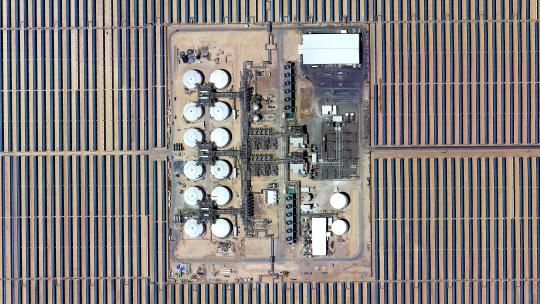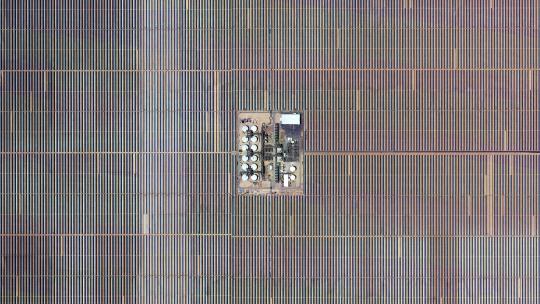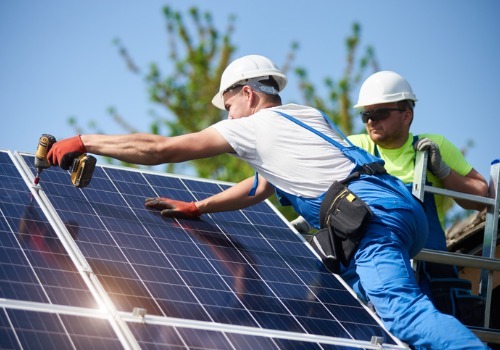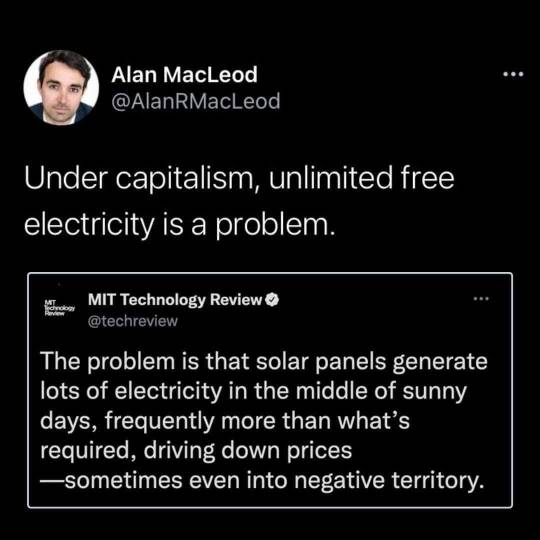#on-grid solar panels
Explore tagged Tumblr posts
Text
Harnessing the Sun: On-Grid Solar Panels Powering a Sustainable Future
As concerns about climate change rise, and the desire for energy independence grows, a beacon of hope shines bright in the form of on-grid solar panels. These innovative systems offer a sustainable and economical solution for homeowners and businesses alike, transforming sunlight into clean electricity that seamlessly integrates with the existing power grid. In this essay, we delve into the world of on-grid solar panels, exploring their benefits, considerations, and how brands like Waaree empower the transition towards a brighter future.
What are On-Grid Solar Panels?
On-grid solar panels consist of photovoltaic (PV) cells that convert sunlight into direct current (DC) electricity. This DC electricity is then converted into usable alternating current (AC) by an inverter, allowing it to power your home or business and any surplus to be fed back into the grid. This bidirectional flow creates a symbiotic relationship with the utility company, enabling you to offset your electricity bills and potentially earn credits for excess energy generated.
Why Choose On-Grid Solar?
The advantages of installing on-grid solar panels are numerous:
Financial savings: Reduce your reliance on traditional energy sources, significantly lowering electricity bills and increasing long-term cost savings.
Environmental benefits: Generate clean, renewable energy, minimizing your carbon footprint and contributing to a healthier planet.
Increased property value: Homes equipped with on-grid solar panels often see an increase in market value, making them a wise investment.
Energy independence: Gain greater control over your energy needs and reduce dependence on fluctuating energy prices.
Grid support: During peak demand periods, your system can feed excess energy back into the grid, contributing to overall grid stability.
Considerations for Going On-Grid:
While the benefits are enticing, careful planning is crucial:
System size and cost: Assess your energy consumption and roof space to determine the optimal system size and budget.
Roof suitability: Ensure your roof has sufficient sunlight exposure and structural integrity for panel installation.
Local regulations and incentives: Understand your local net metering policies and available incentives that can affect your decision.
Waaree: Powering Progress:
Waaree, a leading solar panel manufacturer with a strong presence in India and beyond, offers a diverse range of high-quality on-grid solar solutions. Their commitment to innovation and affordability makes them a trusted partner for individuals and businesses looking to embrace solar power.
Looking Ahead:
The future of on-grid solar panel is bright. As technology advances, costs continue to decline, and government policies become more supportive, we can expect a surge in their adoption. With brands like Waaree leading the charge, on-grid solar panels have the potential to revolutionize the way we generate and consume energy, paving the way for a more sustainable and secure future.
0 notes
Text


Atlantica Solana Generating Station - Arizona - USA 🌎 4K links : 1 & 2
#4k#wallpaper#google earth#satellite view#aerial photography#solar panels#power station#arizona#solana#usa#lines#geometry#abstract#texture#pattern#grid#atlas#landscape#desert#industrial#electricity#dji
519 notes
·
View notes
Text
Have you heard the term “Earthship”?
We just finished writing an interesting deepdive into these one-of-a-kind #offgrid homes. Learn what they are, how to buy one or build your own. We have full video documentary’s, TED talks, tiny #earthship home videos, news articles and even an Earthship Academy.
28 notes
·
View notes
Text
"everything you want is on the other side of fear" no it's on the other side of brutal burnout, fuck you
#hallie speaks#“home improvement” is an interesting process when you have no grid power and are running off diy solar you got secondhand#Figuring out how to get it from the panels to the outlets is a tripppp and I'm not even the one doing most of the work
8 notes
·
View notes
Text
honestly i find everything about me being an adult and doing work stuff inherently fucking hilarious bc like its me but the fact i am going to TEACH. AT A UNIVERSITY. ME. TEACHING. imagine walking into an extra elective you picked up and having /me/ as your professor
#axel grinds on#would like to point out i did NOT SIGN UP FOR THIS#we got some funding somewhere somehow in conjunction with the uni#and i thought it was just to fuckin scope out the uni see if it was suitable for solar panels#and then its “hey good news youre gonna be teachin the architechture students about solar design”#so im like ??????????????? you want me to do WHAT#and then i realised aw fuck theyre architechture students am i gonna have to teach them physics i went into this from engineering so#everything about this is so fucking funny#like i know im an alumni of the university so theyre excited to get me to teach there but like#i am not a /good/ alumni i took 5 years to graduate and then got a mickey mouse without honours degree#because i was too stupid to understand the power grid and all that shit#they took pity on me after i failed the class TWICE and gave me the participation award of degrees#you want ME to TEACH???
9 notes
·
View notes
Text
At EL Sol we focus on providing eco-energy solutions, emphasising harnessing renewable energy sources specifically through solar panels installation. Our services include consulting, engineering, contracting, installation, activation, and ongoing technical assistance. We serve a clientele that spans from households, to large corporations ensuring the smooth integration of solar panel installations to achieve sustainable and efficient energy solutions.
2 notes
·
View notes
Text
woah our power gen today fucking rules!!

#to the unaware: this shows our power usage and generation via solar panels#the big purple bars pushing below the grid is power that was returned to grid#the middle-right meter (48.81 kWh) is the amount of power we have returned to the grid so far today#I'm gonna be sending duke energy a bill lmao
7 notes
·
View notes
Text
youtube
Emma and Edo were once a hotel stage show dance team, until they quit to live out their dream of rescuing animals (Emma) and farming (Edo) on the island of Tenerife. They bought cheap land and began to transform the rocky, dusty soil into a lush homestead.
In the beginning, it was just Emma, Edo, and some family toiling on the land to create basic accommodation. This was at a time of bare basics, with no electricity, running water, or toilets. Soon they were joined by volunteers, and they got creative building homes out of old vans, hillside caves, mud and clay, and scrap materials (including a lot of old pallet wood).
After a couple years, they had expanded beyond an animal sanctuary into a full-fledged community with 40 to 50 volunteers living on-site who all worked to live as lightly on the land as possible. The Tenerife Horse Rescue community is completely off-grid, using solar power, but also clever inventions like a horse poo water heater and a pedal-powered washing machine.
Since the average rainfall on Tenerife is between 11 to 30 millimeters for most of the year, all water is reused. Kitchen and shower water (greywater) is filtered with natural materials like pebbles and papyrus. Toilet water (blackwater) goes through a more rigorous process of biofilters. First it goes into tanks where it is oxygenated to separate liquids and solids, then it flows into a biofilter basin which works as a hydroponic pond (gravel, water, plants but no soil). Then it goes through a biofilter basins which use gravel and papyrus to trap particles and compounds after which it is finally clean enough to water the garden.
To feed what has now become a small village of people and animals, the villagers have graduated from dumpster diving to “freeganism”: they have an established relationship with a local supermarket to collect all damaged, ugly or out-of-date food. Every day, three volunteers pick up new van loads of food, it is then sorted for humans or animals.
To be sure that nothing gets wasted, and to give back to the community, they’ve gone one step further by registering as a local food bank so they can distribute food to local low-income families and other animal sanctuaries.
To volunteer: https://tenerifehorserescue.com/volun...
To donate: https://tenerifehorserescue.com/
More videos on the Tenerife Horse Rescue channel: / @tenerifehorserescue
Drone footage of Tenerife: @madairadventure5201
On *faircompanies: https://faircompanies.com/videos/coup...
#kirsten dirksen#solarpunk#desertpunk#eco village#off grid#animal sanctuary#horse sanctuary#Tenerife#Canary Islands#Spain#Tenerife Horse Rescue#volunteer#dumpster diving#reduce reuse recycle#upcycle#solar power#solar panels#composting#water harvesting#grey water#greywater#black water#blackwater#biofilter#freeganism#supermarket#food bank#Youtube
5 notes
·
View notes
Text
Tiny Home Container Homes: Tips and Tricks for Building and Living in One
If you’re considering building a tiny home, container homes are a popular and affordable option. Not only are they eco-friendly and sustainable, but they’re also sturdy and can withstand harsh weather conditions. And with the rise of the tiny home movement, more and more people are choosing to build their own container homes. In this blog post, we’ll share some tips for building and designing…
View On WordPress
#Affordable#Architecture#Building#Composting toilets#Conversion#Design#DIY#Exterior#Interior#Living#Minimalism#mobility#Multi-functional furniture#Off-grid#Permits#Regulations#Shipping containers#Simplicity#Solar panels#Space-saving#Sustainable#Truck homes#Zoning laws
2 notes
·
View notes
Text
Finding The Passionate And Best Solar Installers Melbourne
If you are looking for the best solar installation services for your home or business, look no further than our company, Green Edge Technologies. We have a team of highly skilled solar installers working day in and day out to ensure that all new installations are on time, meet all safety regulations, and provide customers with excellent value for money. We aim to provide our customers with the best possible solar installation services at a competitive price. We will work closely with you to ensure your needs are fulfilled, whether a small residential installation or a large commercial one. Contact us for more details about Best Solar Installers Melbourne.

#4kw solar system#solar monitoring system#10kw solar#solar energy companies#15kw solar system price#solar panel installations near me#30kw solar system with battery#commercial and industrial solar#solar for business melbourne#best solar providers melbourne#20kw off grid solar system#solar power north melbourne#solar panel installations boxhil
2 notes
·
View notes
Text
Oh no, our energy is unsustainable! But instead of taxing businesses and subsidizing consumers while the market changes energy bases, the government has the GALL to tell us to curb our usage.
capitalism is not going to put that blame on me

#power grid#energy consumption#it should have already been#made fully renewable#working class#sustainability#fuck ceos#opinion#Until we calculate the amount of money it will take to undo the damage from strip mining/extracted metals for solar panels and the incredib#we will never be able be adjust the cost appropriately and charge just the right amount to be fair#so the only solution is to tax the shit out of all energy creation instead of the consumption#tax businesses for their energy usage and you'll have the funds to subsidize the consumer usage#the crisis is literally built on mandated profit puppet strings (stockholders and the law of profit)
48K notes
·
View notes
Text

Autumn shows us how beautiful it is to let things go. 🍃🍂🍂🍁
#off the grid#offgrid#offthegrid#off grid#homestead#solar power#solar energy#diy tiny home#solar panels#solar#fall forest#fall vibes#fall season#fall
20 notes
·
View notes
Text
Why Solar Power Panels Are a Smart Investment for Tamil Nadu Residents

One of the most practical and profitable substitutes for conventional electricity sources as the globe shifts to renewable energy is solar power. In addition to being an environmentally responsible choice, installing solar power panels is also a wise financial move for people of Tamil Nadu, and Beamz is here to assist make the switch smooth. The time to invest in solar energy has never been better due to the state's plentiful sunshine, alluring government incentives, and growing energy expenses. With the help of certain statistics and facts, let's examine why Beamz solar power panel installation is a prudent financial choice for those living in Tamil Nadu.
1. Tamil Nadu’s Sunshine Advantage: Ideal for Solar Energy Production
One of the greatest states for solar power generation is Tamil Nadu, which is renowned for having more than 250 sunny days annually. The area experiences a remarkable 5.5 kWh/m²/day of solar radiation, which guarantees that solar panels run effectively for the majority of the year.
Installing Beamz solar panels should result in an average daily generation of 4.5 kWh from 1 kW of solar power. Beamz solar systems are incredibly efficient in Tamil Nadu because of their reliable energy production, which guarantees that you will always get the maximum return on your investment.
Best Solar Power Panel Provider in Tamil Nadu
2. Slash Your Electricity Bills with Beamz Solar Panels
Energy prices in Tamil Nadu range from ₹7.5 to ₹8 per kWh, which is a comparatively high cost. A 5 kW Beamz solar power system can provide 20–25 kWh of electricity each day, which might save you between ₹15,000 and ₹20,000 a year on your electricity bill, depending on how much energy you use. Solar energy is a very wise decision over time because of these savings. Residents of Tamil Nadu can reduce their dependency on costly grid power by using Beamz solar panels, which also offer the option of net metering. To further lower your electricity bills, you can feed any excess power your system produces back into the grid and get credits to offset your overnight energy use.
3. Rapid Return on Investment (ROI)
Purchasing solar panels from Beamz provides a rapid return on investment. In Tamil Nadu, a 5 kW Beamz solar system will usually pay for itself in 4–5 years just from energy savings. For another 15 to 20 years after your Beamz solar system has paid for itself, you will continue to benefit, which will result in significant long-term savings and a strong return on your investment.
4. Boost Your Property Value with Beamz Solar Panels
Solar power systems have been shown to increase the value of homes. According to studies, adding solar panels to a home can raise its value by 5%. In Tamil Nadu, where people are becoming increasingly interested in eco-friendly living, adding Beamz solar panels to your house increases its appeal to potential purchasers.
For instance, installing a Beamz solar system for ₹2.5 lakh might raise the value of your house by up to ₹1.25 lakh when you sell it. Because of this, solar energy becomes more than simply a means of reducing electricity costs; it also becomes a significant asset when it comes time to sell your home.
Best Solar Power Panel Provider in Tamil Nadu
5. Energy Independence and Reliability with Beamz Solar Systems
With Beamz solar systems, people in Tamil Nadu are also becoming more energy independent. In certain places, power outages and grid instability are frequent occurrences. By using solar power, you can prevent interruptions to your electricity supply.
Together with your Beamz solar panels, you may store extra energy for later use by investing in solar battery storage, which will guarantee that you have electricity even during peak hours or when the grid is down. Because of this, Beamz solar panels are a dependable and environmentally friendly energy option for both urban and rural regions.
6. Low Maintenance and High Longevity
The extended lifespan and minimal maintenance required of Beamz solar panels are among their best qualities. After installation, the majority of solar panels, including Beamz, have 20–25 year guarantees and have low continuing costs. Simple maintenance typically entails cleaning the panels and inspecting the inverter every two to three years. Long-term increased efficiency and longevity are assured with the newest technology, and Beamz solar panels will provide worry-free performance for years to come.
7. Support Local Jobs and Economic Growth
By selecting Beamz for your solar energy requirements, you're investing in your community as well as your house or place of business. Beamz solar panel installation supports the expanding local economy, and the solar industry is a major source of job development. Tamil Nadu's continued use of solar energy would increase demand for trained workers in the production, installation, and maintenance of solar panels, boosting employment and the local economy.
Best Solar Power Panel Provider in Tamil Nadu
Conclusion
Beamz solar power panels provide inhabitants of Tamil Nadu with a winning combination of long-term dependability, environmental advantages, and financial savings. There has never been a better moment to invest in solar energy thanks to the state's plentiful sunshine, the government's substantial subsidies, and Beamz's superior solar goods.
Reduce energy expenses significantly and save money on electricity bills.
Utilize government incentives to lower the initial outlay of funds.
Boost the value of real estate and help create a better, cleaner environment.
Purchasing Beamz solar power panels is a wise financial move that will pay off for years to come, with a payback period of five to seven years and savings of up to twenty-five years.
1 note
·
View note
Text
Okay but,
We already know how to store extra energy in a way that we can later extract it back
that *doesn’t* use batteries!
Electromagnetic flywheel systems.
It’s a major infrastructure project to build it on a big enough scale to handle an entire power grid,
but then once you have it, it lasts for generations
instead of constantly mining for lithium at the expense of the environment and exploited workers.
Invest in civic engineering!!!
(Also, there are smaller-scale flywheel systems…
including small enough to power public transportation;
Flywheel technology has advanced *tremendously* since the 1950s Gyrobus.)
@amtrak-official

#civic engineering#infrastructure#zero emissions#flywheels#power grid#solarpunk#solar panels#green energy
72K notes
·
View notes
Text
There are three types of solar power systems, they are as listed below:
On-grid System
Off-grid System
Hybrid System
#dosolar#solarpanelsmelbourne#affordable5kwsolarsystempricevictoria#accoupledbatteryreservoir#6.6kwsolarpanelniddrie#solar energy#solar power#solar panels#solarpanels#solar#solar system#types of solar panels#on grid solar system#on grid inverter#off grid system#hybridsystem#offgridsystem
0 notes
Text
Get the Best On Grid Solar Panels from Enermax Systems
Empowering Homes and Businesses with On-Grid Solar Solutions by Enermax Systems
In today’s fast-evolving energy landscape, solar power is revolutionizing how we source and consume electricity. Among the many solar energy systems available, On-Grid Solar Panels stand out as an efficient, reliable, and cost-effective solution for homes and businesses. Enermax Systems, a leader in renewable energy solutions, specializes in On-Grid Solar Panel installation and is recognized as one of the top On Grid Solar Panel suppliers.
What Are On-Grid Solar Panels?
An On-Grid Solar Panel system, also known as a grid-tied system, is directly connected to the electricity grid. It allows you to generate your own solar energy while remaining integrated with the grid for additional power needs or when your solar energy production exceeds your consumption. This setup provides flexibility, cost savings, and the ability to earn credits for excess energy fed back to the grid through a mechanism called net metering.
Why Choose On-Grid Solar Panels?
Cost Savings: By generating your own electricity, you can significantly reduce or even eliminate your monthly power bills.
Net Metering: Excess solar energy produced during the day is sent back to the grid, earning you credits that can offset nighttime energy use.
Eco-Friendly: On-grid systems contribute to reducing greenhouse gas emissions, helping create a greener planet.
Low Maintenance: With no batteries required, On-Grid Solar Panels are easier and more affordable to maintain.
Enermax Systems: The Experts in On-Grid Solar Panel Solutions
Enermax Systems has built a reputation as a trusted provider of renewable energy solutions. With years of experience in the industry, we offer a complete range of services, including On-Grid Solar Panel installation and supply.
High-Quality On-Grid Solar Panels
As leading On-Grid Solar Panel suppliers, we provide premium solar panels known for their durability, efficiency, and performance. Sourced from top manufacturers, our panels are designed to withstand diverse weather conditions while delivering maximum energy output. Whether you need a solar solution for your home, office, or industrial facility, we have products tailored to your needs.
Expert Installation Services
Proper installation is critical to the efficiency of your solar system. At Enermax Systems, our certified technicians specialize in On Grid Solar Panel installation. We conduct detailed site assessments, design customized solutions, and handle the entire installation process with precision. Our team ensures your system is optimized for peak performance and complies with all local regulations.
Comprehensive Support
From the initial consultation to post-installation maintenance, Enermax Systems provides end-to-end support. We are committed to making your transition to solar power seamless and stress-free.
Why Choose Enermax Systems?
Trusted Expertise: With years of experience, we are leaders in solar energy solutions.
Customized Solutions: We design systems tailored to your energy needs and budget.
Reliable Products: Our solar panels are sourced from top manufacturers and come with industry-leading warranties.
Affordable Pricing: We offer competitive rates to ensure your investment delivers long-term value.
Take the First Step Toward Sustainability
Switching to solar power with On-Grid Solar Panels is a smart, sustainable choice. By partnering with Enermax Systems, you gain access to top-quality products, expert installation, and unmatched support.
Take control of your energy future today! Contact Enermax Systems for a free consultation and discover how On-Grid Solar Panels can transform your home or business.
Enermax Systems – Brightening Lives with Solar Power.
If you looking for On Grid Solar panel or On Grid Solar panel suppliers visit or contact Enermax Systems!
Contact us: +91 9225126972
Visit us: https://www.enermax.co.in/on-grid-solar-panel.php

#On Grid Solar panel#On Grid Solar panel installation#On Grid Solar panel suppliers#OnGridSolarPanel#OnGridSolarPanelInstallation#OnGridSolarPanelSuppliers
0 notes